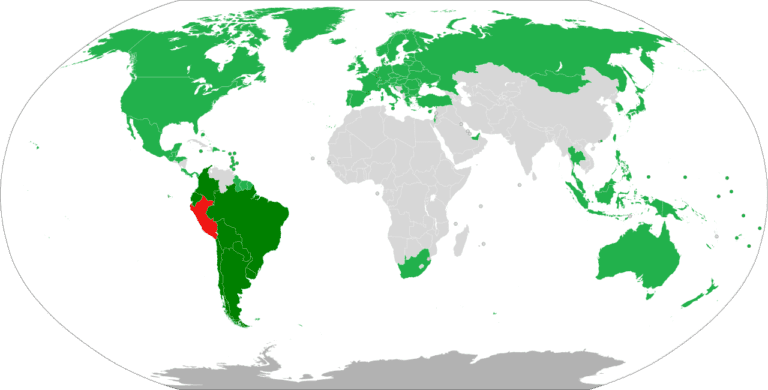Republic of Peru República del Perú

Peru is a diverse and vibrant country located in South America. With a powerful blend of ancient and modern cultures, Peru is a must-go for any passionate traveler. From the capital city of Lima to the hills and valleys of the Andes, Peru is a land of beauty, history, and adventure. The land of Peru has been inhabited for over 12,000 years, dating back to the ancient cultures of the Inca and Moche. The architectural monuments they built are still standing today, from stone mausoleums to giant terraces, alongside intricate temples that serve as a testament to their remarkable civilization. In addition to its rich history, Peru also boasts incredible natural beauty. From the Amazonian rainforests of the east to the lush mountain peaks of the west, Peru’s terrain doesn’t stop surprising. The Great Lake Titicaca is the second-largest lake in South America, with its waters surrounded by lulling hills and rural villages. On the top of the Andes mountains lie the fantastic ruins of Machu Picchu for all to explore. Peru also bears the reputation of being the gastronomic capital of the world. The country is proud of its vibrant indigenous culture and ingredients in the kitchen. The peninsula of Lima is the epicenter of gastronomic innovation in the country, where top galleries and tastings for foodies await. The vibrant and unspoiled nature of the land makes it a perfect place to indulge in adventure sports such as parachuting, paddle boarding, trekking, and mountain biking. Whether it be exploring the beautiful beaches of the northwest, the Amazon of the east, or even participating in reforestation programs, Peru offers the chance for intrepid travelers to connect with nature. Finally, the charming people of Peru make it an unforgettable experience to explore the land. With a warm welcome and cheerful spirits, the locals open their doors to share stories of their culture, heritage, and history. Whether you’re looking for a life-changing historical adventure or just a break from everyday life, Peru has something for everyone.
Info & Stats
- Language: Spanish, Quechua, Aymara
- Population: 33 million (2023)
- Timezone: [UTC -5]
- Ethnic Make-up: 60.2% Mestizo, 25.8% Indigenous, 5.9% White, 3.6% Black
- Religion: Overwhelmingly Christians (95%, with the majority being Roman Catholics)
- Political System: Presidential Republic
- Currency: Sol (PEN)
- Credit Cards: In major cities, hotels, restaurants, etc., credit cards are widely accepted. In general, though there is a preference for cash, carrying small bills is a good idea. Similarly, ATMs are common in large cities but generally charge a high commission fee, so it might be better to exchange money rather than withdraw.
- Electricity: Socket type A, B, C, 220 volt / 60 hertz
- Tipping Customs: 10% in restaurants, predominantly cash
- Haggling Culture: Common
Articles
Climate & Seasons
Peru is generally divided into three main climatic regions: a cool coastal region, a temperate region of the Andes, and a hot, humid region to the east.
The coastal region is generally subtropical, with temperatures ranging from 14–23°C and humidity around 80%. The Andean region has temperatures ranging from 3–20°C (37–68°F), while the eastern region has temperatures between 16°C and 38°C and high humidity levels. The climate in this region is heavily influenced by the Amazon rainforest.
The dry season usually lasts from May to September, while the wet season is from October to April. The highlands of Peru have a colder mountain climate with cooler temperatures year-round and cooler summers and cold winters.
Entry Requirements
Click the map to see details on visa requirements for each country.
Safety
Safety: The major risks to people are pickpocketing and scams, which are very common in large cities such as Lima or tourist destinations like Cusco
Natural risks: There are several natural risks in Peru, as the region is prone to earthquakes and volcanic eruptions. The most common risks are floods and landslides during heavy rainy periods.
Special mention to altitude sickness as it can easily occur while visiting Peru’s mountainous regions. Peru has some of the highest peaks in the world and it is important to take your time to acclimate to the change in altitude. Preventative measures can include avoiding alcohol, drinking plenty of water, and there are many medications that can be taken, as well as using products of the coca leaves such as teas.
Emergencies number: 911
See more safety info on the Global Safety Indices page


